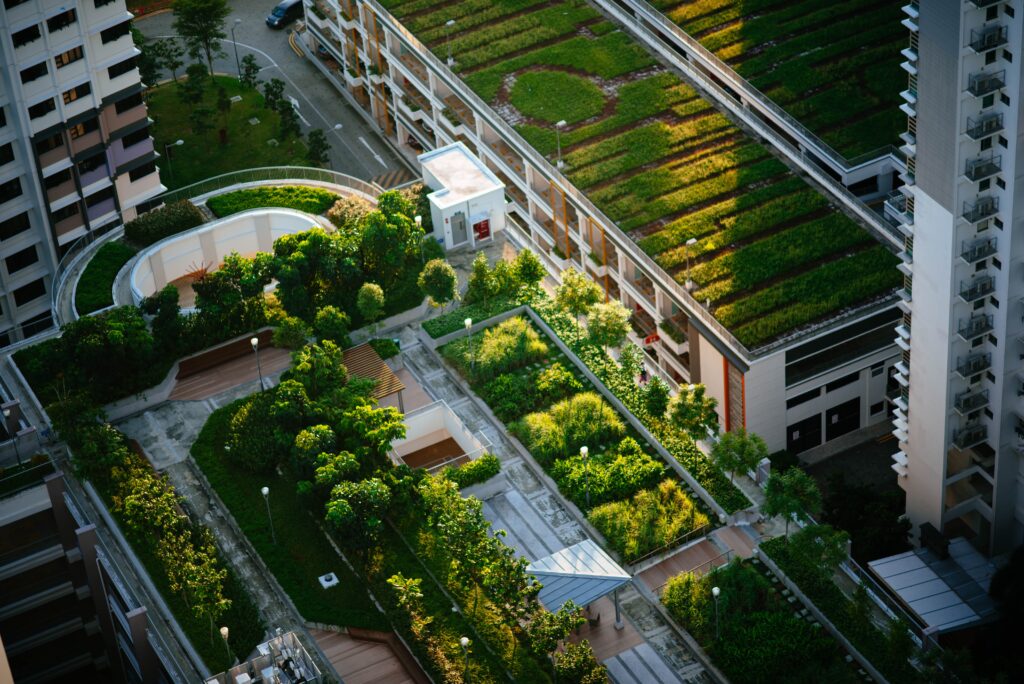Need Help With a Green Roof in Montrose, Colorado?
We proudly serve all of Montrose County as Montrose, Colorado’s premier roofing company.
Exploring the Pros and Cons of a Green Roof: Is It Worth the Investment?
Green roofs, or living roofs, have become increasingly popular in the building industry over the past few decades. They offer numerous benefits to the environment and to the building itself. A green roof is a roof that is covered with vegetation, including a growing medium, drainage, and irrigation systems. A green roof can help to reduce energy costs, provide insulation, reduce stormwater runoff, improve air quality, and provide habitat for wildlife. However, before making the investment in a green roof, it is important to consider the pros and cons to determine if it is right for your building. In this article, we will explore the pros and cons of a green roof, as well as the potential costs associated with installing one. We will also discuss the potential benefits that a green roof can provide to your building and the environment.
Benefits of Green Roofs
Green roofs are an environmentally friendly way to reduce the impact of a building on the environment and provide numerous benefits to the owner. A green roof can extend the life of the roof by providing an extra layer of protection from the elements, such as UV rays and extreme temperatures.
Green roofs can also help to reduce energy costs by providing insulation and shading. Furthermore, green roofs can help to reduce stormwater runoff by collecting and storing rainwater. Additionally, green roofs can improve air quality by absorbing pollutants, reducing the urban heat island effect, and providing habitat for wildlife.
Potential Costs of Installing a Green Roof
The costs of installing a green roof depend on the size of the roof, the types of materials used, and the complexity of the design. Generally speaking, a green roof installation will cost more than a traditional roof installation. However, the costs are often offset by the energy savings and other benefits that a green roof provides. It is important to do your research and get multiple quotes from experienced contractors before making a decision.
Pros and Cons of Green Roofs
The pros and cons of green roofs should be carefully considered before making the investment. On the one hand, green roofs can provide numerous benefits to the environment and to the building itself. They can reduce energy costs, provide insulation, reduce stormwater runoff, and improve air quality. On the other hand, green roofs can be expensive to install and require more maintenance than traditional roofs. It is important to weigh the pros and cons before making a decision.
How to Choose the Right Green Roof for Your Building
When choosing a green roof for your building, it is important to consider the size and shape of the roof, the intended use, the climate, and the budget. Additionally, it is important to research the available materials and choose one that is best suited for your needs. For instance, a lightweight green roof is best for a flat roof, while a heavier green roof is better for a sloped roof. Furthermore, it is important to consider the maintenance requirements and choose a system that is easy to maintain.
Maintenance of Green Roofs
Green roofs require more maintenance than traditional roofs, as they need to be monitored for pests and weeds. Additionally, the vegetation needs to be watered regularly and the drainage and irrigation systems need to be checked for proper functioning. It is important to hire a professional to perform regular maintenance and inspections of the green roof to ensure that it is in good condition and functioning properly.
How Green Roofs Can Benefit the Environment
Green roofs can help to reduce air pollution by absorbing pollutants and reducing the urban heat island effect. Additionally, they can help to reduce stormwater runoff by collecting and storing rainwater. Furthermore, they can provide habitat for birds and other wildlife, as well as provide additional green space in urban areas.
How to Maximize the Benefits of a Green Roof
To maximize the benefits of a green roof, it is important to choose the right materials and design for your building. Additionally, it is important to use drought-tolerant plants and choose plants that are native to your area. Additionally, it is important to use soil that is designed for green roofs and to ensure that the drainage and irrigation systems are functioning properly.
Examples of Successful Green Roofs
Green roofs have been used in a variety of settings and locations, from residential homes to large commercial buildings. For instance, the headquarters of the World Wildlife Fund in Washington, D.C. has a green roof that provides insulation and reduces energy costs. Additionally, the living roof at the California Academy of Sciences in San Francisco helps to reduce air pollution and provides a habitat for wildlife.
Conclusion
Green roofs are an environmentally friendly and cost-effective way to reduce the impact of a building on the environment. They can help to reduce energy costs, provide insulation, reduce stormwater runoff, improve air quality, and provide habitat for wildlife. However, it is important to consider the pros and cons as well as the potential costs before making the investment. Additionally, it is important to choose the right materials and design for your building and ensure that the green roof is properly maintained. With careful planning and consideration, a green roof can be a worthwhile investment for any building.
Get A Free Quote:


